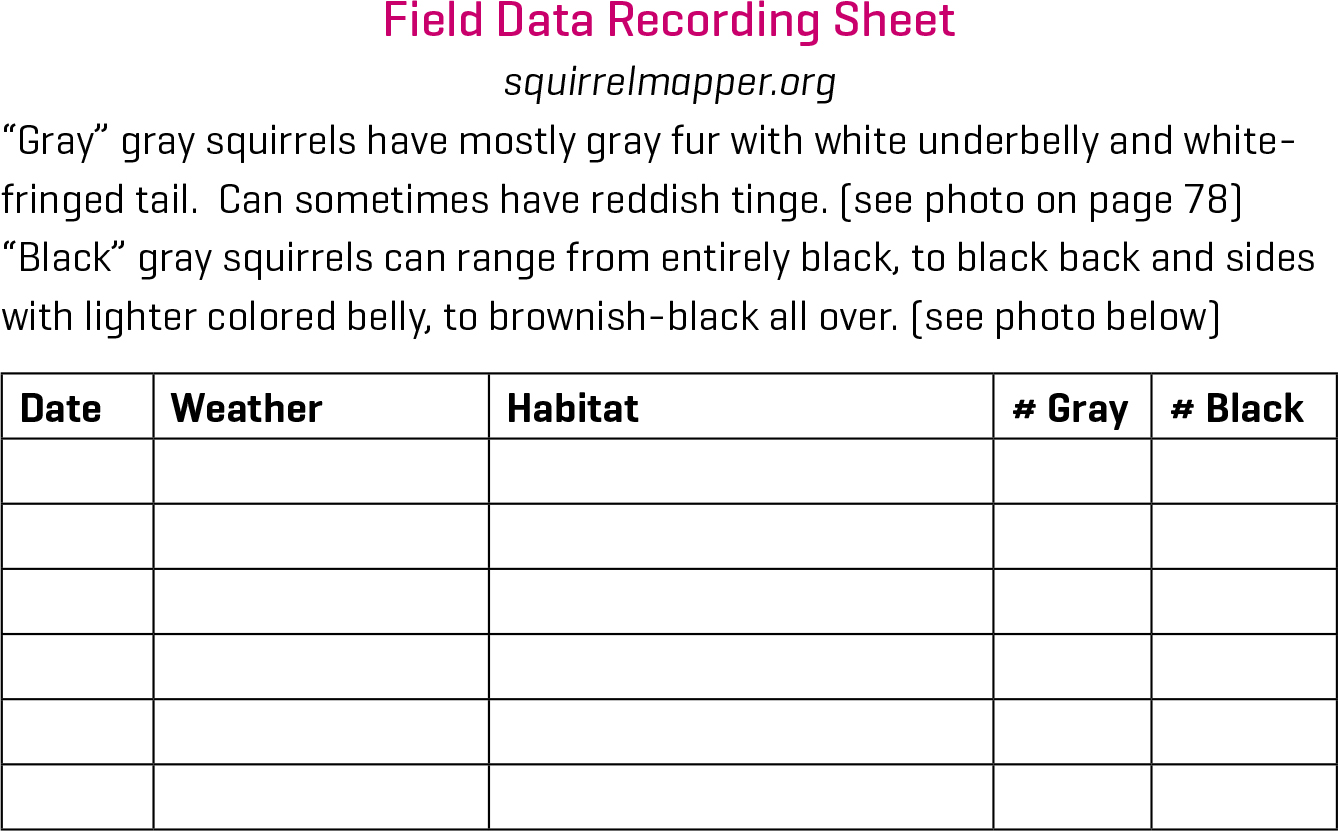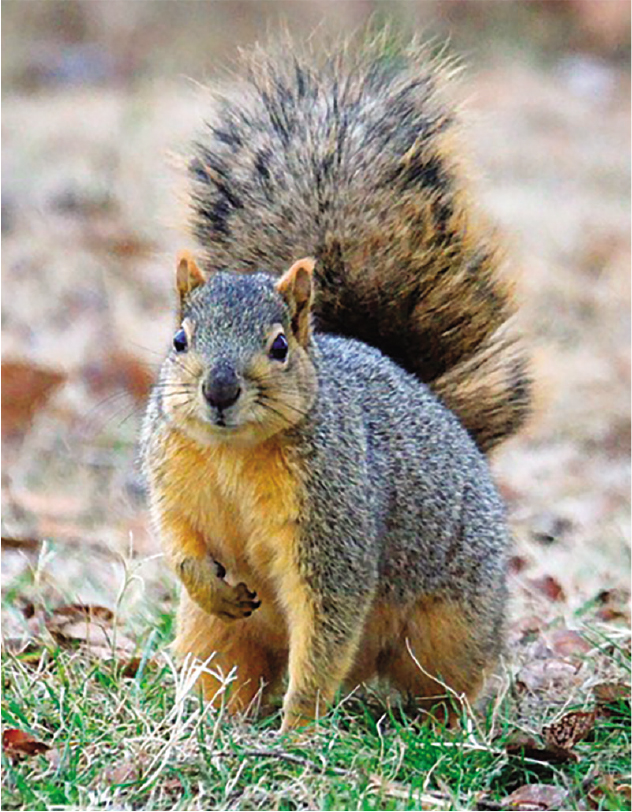Citizen Science
Squirrel Mapper
Together we can crack this nut!
By Jill Nugent
Collaborative science projects you can join.
Squirrel Mapper is presented by the State University of New York, College of Environmental Science and Forestry, and is supported by the National Science Foundation. The goal of Squirrel Mapper is to engage students in the study of evolution in action by observing gray and black squirrels across rural and urban landscapes. Gray squirrels (scientific name, Sciurus carolinensis) are observed to have two color morphs, gray and black fur color. Two centuries ago, historical records describe the black squirrel coloration as more abundant and frequently observed than the gray coloration. Today, we tend to see more of the gray squirrel coloration than we see of the black Sciurus carolinensis coloration. What environmental pressures may be accounting for the difference in observation of color frequencies in varying landscapes? Based on genetics, the black color is the dominant fur color, and the gray color is recessive; therefore, questions remain as to why the black coat color, the dominant color, is becoming less common in certain environments. What camouflage is protecting the squirrels in urban and in rural environments? How may pressures such as hunting or temperatures in different latitudes be impacting the fur characteristics that we commonly see today? How has the decrease in dense, old-growth forests over the last two centuries impacted squirrel coat color frequencies? How has urbanization impacted the fur color characteristics we see today? In a nutshell, Squirrel Mapper invites students to explore these questions and more by making local observations in your neighborhood or schoolyard, testing hypotheses related to squirrel color variation in different areas, investigating trends in the data, and generating future predictions on the distribution and abundance of varying gray squirrel color morphs.
Project goal: To understand why gray squirrels changed from black to gray
Your task: Report squirrel observations, use the data to ask questions, and play an evolution game!
Science discipline: Life science
Squirrels provide an excellent biological model for students to observe in nature. They are active in daylight, are easy to observe (and identify), and they are found in a variety of habitats, from rural to urban landscapes.
To get started with Squirrel Mapper, first visit the project website and register online. After registering, you will be able to get started submitting observations of squirrels in your area. The project website provides a printable data recording sheet (see Figure 1), and you will be able to upload your observation data through the Squirrel Mapper website. The project welcomes all gray and black squirrel observation data. If you are only seeing one color, that is okay—both colors are important and data are needed on both the black and gray color morph observations. The fox squirrel (Sciurus niger) is very common in North America. The fox squirrel looks like a gray squirrel, but it tends to be larger and has red hue coloration on the abdomen and tail. The belly of the fox squirrel tends to be near the orange color range and the belly of the gray squirrel is white. The tails differ in that the fox squirrel has a bit of black fringe on its tail, while the gray squirrel has white, frost-colored tips on its tail. Fox squirrel observations should not be submitted to the Squirrel Mapper project, but can be submitted to other projects (see “Additional Squirrel Citizen Science Projects”).

Materials you will need:
- computer(s) with internet access to submit observations
- pencil to record observations
- Field Data Sheet (Figure 1)
The Squirrel Mapper project includes helpful educator resources on the website, including lesson plans, FAQs, and science background information on genetics, natural selection, and evolution. The project also includes a “Squirrel Hunt” activity for students to explore the success of traits in different environments. Squirrel Mapper suggests that teachers begin the project experience by leading a class discussion on squirrel coloration, followed by the “Squirrel Hunt” activity, and lastly, by using the data sheets to collect local squirrel observations. The culmination of the recommended experience sequence is the submission of observation data. The project experience provides students with the opportunity to observe the local environment, ask and test questions, and explore the process of evolution in action. Students gain a deeper understanding of evolution in a human-dominated landscape though real-world observations and authentic experiences.
In addition to “squirreling away” time this spring for squirrel-themed science, there are also a number of exciting global citizen science activities, events, and programs taking place this April and May. These include the City Nature Challenge, Citizen Science Day, and the debut of PBS Nature’s “America Spring LIVE,” a three-part public television event that will include citizen science engagement opportunities (see “Upcoming April/May 2019 Citizen Science Events”). Make plans to “spring into citizen science” this April and May!



